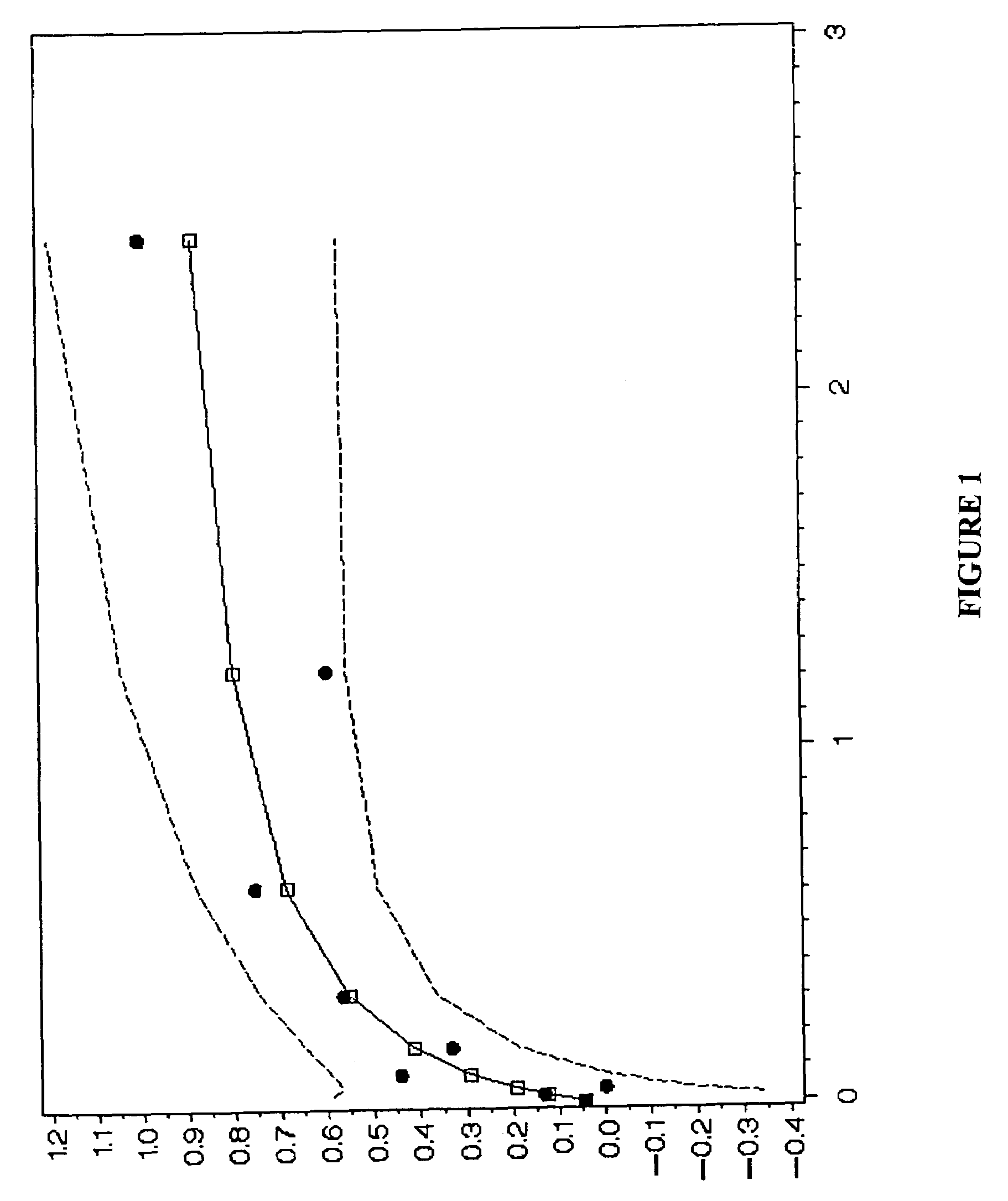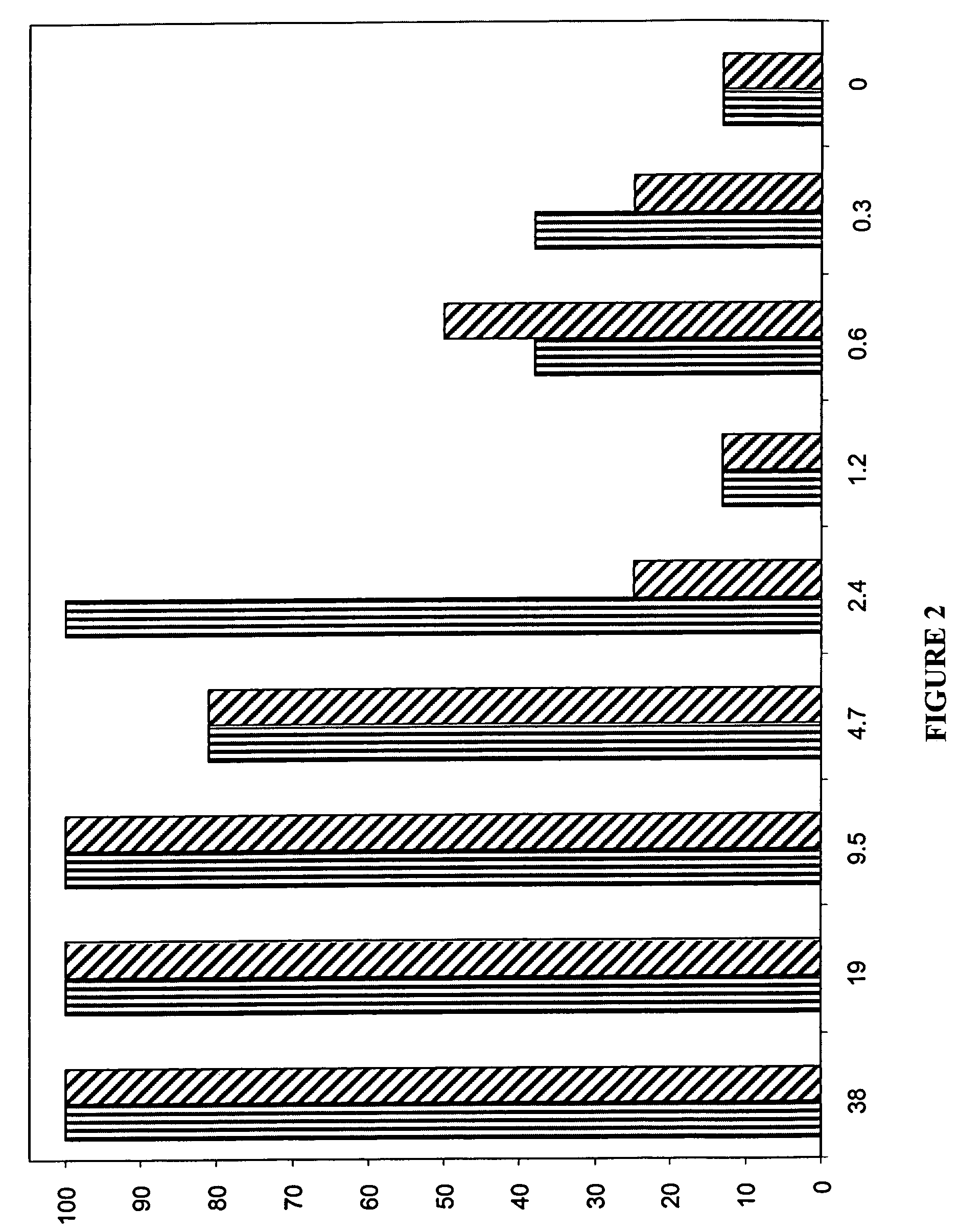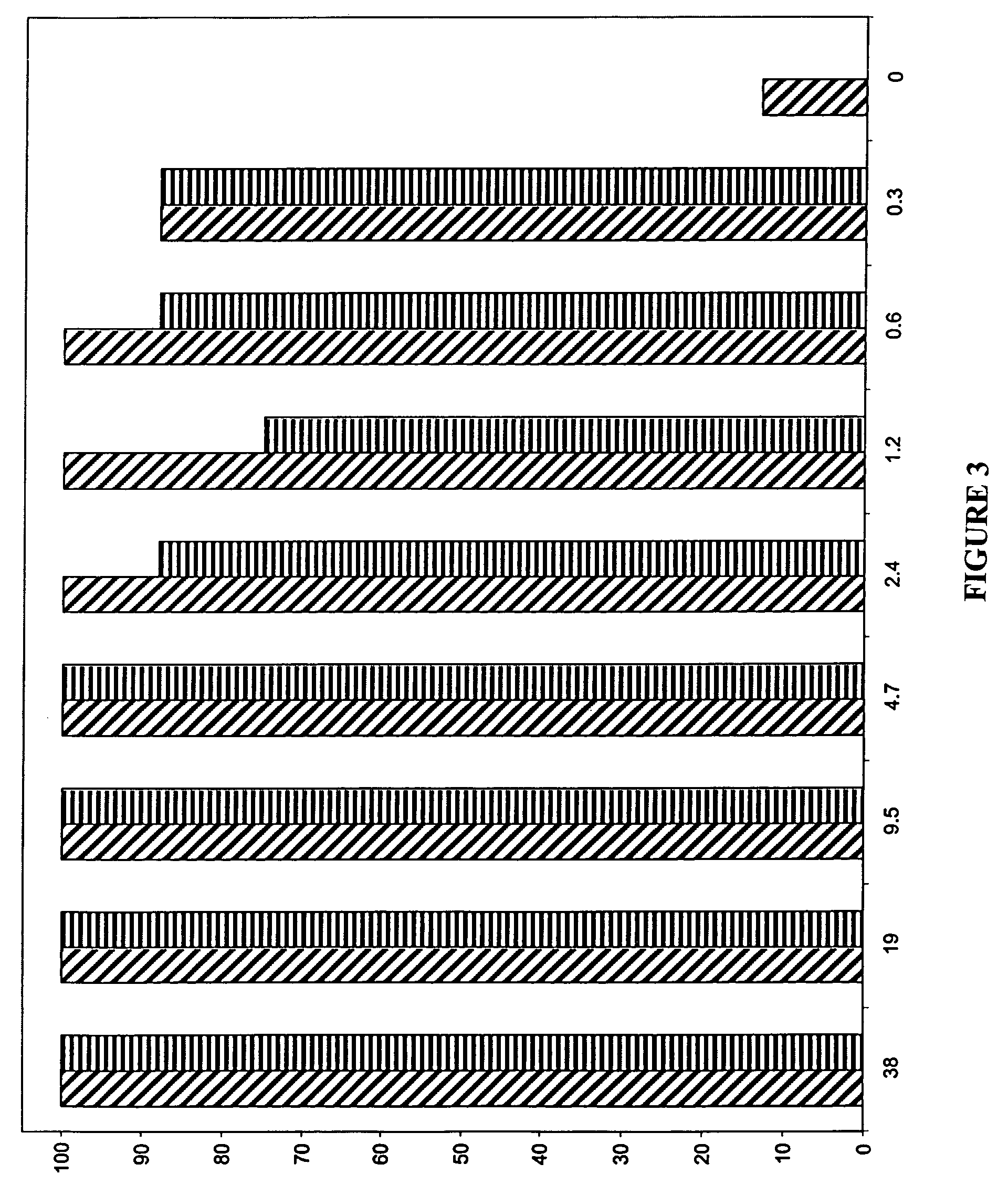Genes encoding plant protease-resistant pesticidal proteins and method of their use
a plant protease and pesticidal protein technology, applied in the field of modified pesticidal polypeptides and nucleic acid sequences, can solve the problems of increasing regulatory pressure, increasing environmental hazards, and increasing the resistance of proteolytic degradation to plants. , to achieve the effect of increasing the pest resistance of plants, increasing the expression, and increasing the resistance to proteolytic degradation
- Summary
- Abstract
- Description
- Claims
- Application Information
AI Technical Summary
Benefits of technology
Problems solved by technology
Method used
Image
Examples
example 1
Bioassay for Testing the Pesticidal Activity of B. thuringiensis Strains Against Western Corn Rootworm and Southern Corn Rootworm
[0191]Insect diets for Colorado potato beetle (CPB), southern corn rootworm (SCRW), and western corn rootworm (WCRW) larvae are known in the art. See, for example, Rose and McCabe (1973) J. Econ. Entomology 66:393, herein incorporated by reference. The insect diet is prepared and poured into a CD International bioassay tray. Generally 1.5 ml of diet is dispensed into each cell with an additional 150 μl of sample preparation applied to the diet surface.
[0192]Bacterial colonies from an original plate of transformants expressing the pesticidal proteins of interest are spotted on replica plates and inoculated in 5 ml 2×YT broth with 500 μl / 1000 ml kanamycin antibiotic. The tubes are grown overnight. If no growth is present, the tubes are incubated for an additional 24 hours. Following incubation, the tubes are centrifuged at 3500 rpm for 5-8 minutes. The super...
example 2
Pesticidal Activity of B. thuringiensis Strain 1218 Lysates
[0194]Samples prepared from cultures of B. thuringiensis strains 1218 were tested for the presence of pesticidal activity against CPB, WCRW, and SCRW as described in Example 1. As a control, the diet was treated with phosphate-buffered saline (PBS).
[0195]To prepare each sample, an individual colony of a strain growing on an LB plate was selected and used to inoculate a flask containing 50 ml of TB medium. The flask was incubated overnight at 28° C. and 250 rpm. Following the incubation, the culture in the flask was transferred to a tube, and the tube was centrifuged at 4300×g for 15 minutes. The supernatant was discarded and the pellet resuspended in 50 ml of sporulation medium. The tube was centrifuged again at 4300×g for 15 minutes. The second supernatant was discarded, and the second pellet resuspended in 50 ml of sporulation medium. The resuspended culture solution was transferred to a flask, and the flask was then incub...
example 3
Pesticidal Activity of Crystal Proteins Isolated from B. thuringiensis Strain 1218
[0199]Using samples of sporulated cultures of B. thuringiensis strain 1218 prepared as described in Example 2, crystal proteins were isolated and then trypsin-treated using methods known in the art. Briefly, after purification (zonal gradient centrifugation, Renografin-76), the purified crystals were dissolved in alkaline buffer (50 mM Na2CO3, 10 mM dithiothreitol, pH 10). Prior to use in the assays, the dissolved crystal proteins were concentrated by filtration with Centriprep® (Millipore Corp.) centrifugal filter units with a MW cutoff of 10,000.
[0200]It is recognized that under some experimental conditions, it may be advantageous to treat the Cry8-like polypeptides with a protease, for example trypsin, to activate the protein prior to determining the pesticidal activity of a particular sample. Methods for the activation of protoxin by a serine protease are well known in the art. See, for example, Co...
PUM
| Property | Measurement | Unit |
|---|---|---|
| Fraction | aaaaa | aaaaa |
| Fraction | aaaaa | aaaaa |
| Fraction | aaaaa | aaaaa |
Abstract
Description
Claims
Application Information
 Login to View More
Login to View More - R&D
- Intellectual Property
- Life Sciences
- Materials
- Tech Scout
- Unparalleled Data Quality
- Higher Quality Content
- 60% Fewer Hallucinations
Browse by: Latest US Patents, China's latest patents, Technical Efficacy Thesaurus, Application Domain, Technology Topic, Popular Technical Reports.
© 2025 PatSnap. All rights reserved.Legal|Privacy policy|Modern Slavery Act Transparency Statement|Sitemap|About US| Contact US: help@patsnap.com



